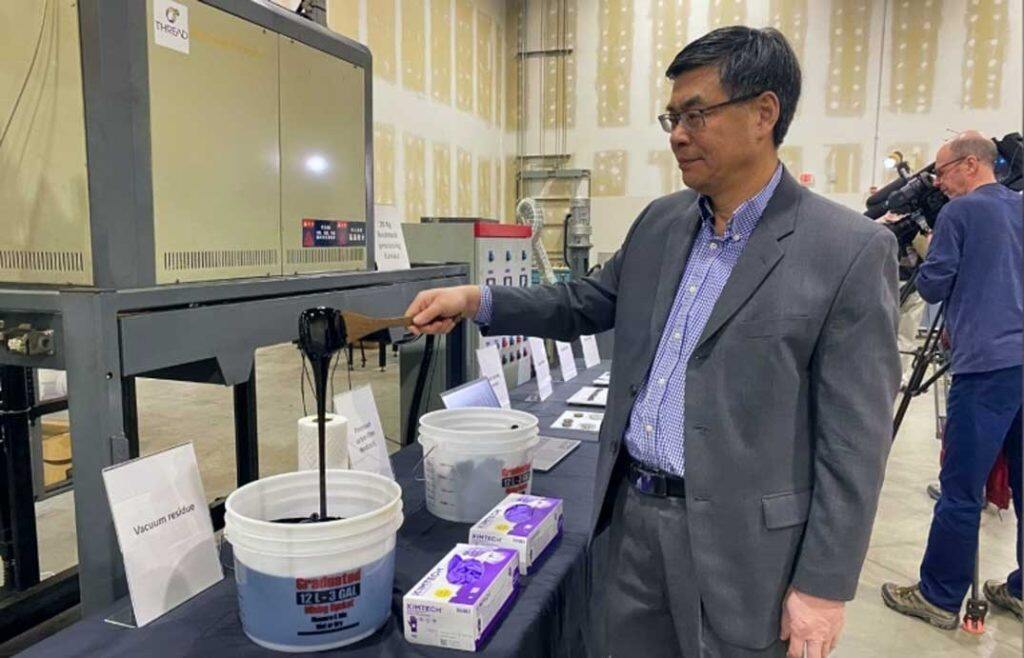A University of Alberta engineering researcher has found a way to produce carbon fibre from bitumen at half the cost of current commercial product and with 70 per cent lower carbon emissions.


Weixing Chen’s process is so promising that the chemical and materials engineering professor has received $4 million — $1 million from Alberta Innovates and $3 million from Emissions Reduction Alberta — to scale up production to 5,000 tonnes a year by the early 2030s from a current rate of 500 grams to one kilogram of carbon fibre per day.
Chen’s team is one of five in Alberta and B.C. to successfully pass the third phase of the Carbon Fibre Grand Challenge, a contest aimed at finding new ways to produce fibre from bitumen — the heavy oil extracted from Alberta’s oilsands.
Most bitumen products today, such as gasoline, diesel and heating oil, are destined for combustion to produce energy. But carbon fibre is one high-demand product that could also be made from bitumen feedstock.
The high strength and stiffness of carbon fibre — along with its low density and high corrosion resistance — make it superior to many conventional metals, wood products and commercial polymers used in electric vehicles, transportation, infrastructure, construction and consumer products.
Chen’s team would use bitumen removed from oil during refinement, taking advantage of a raw material far easier to source and process than expensive synthetic precursors, such as polyacrylonitrile or pitch, currently used to produce carbon products.
“The precursor used in current carbon accounts for half of the entire product cost,” says Chen. “The low cost of our fibre — used for a number of applications — will open up many opportunities where current manufacturers can’t afford it.”
Chen’s process involves heating and softening bitumen at temperatures as high as 350 C, at which point carbon fibres are pulled from the feedstock. His team is also developing a chemical- and flame-resistant material called oxidized fibre, which can be used in protective clothing and construction materials.
The key ingredients in bitumen for producing carbon fibre are called asphaltenes, non-volatile components of crude oil that usually turn into a solid material called petroleum coke during refinement, much of which often ends up in the landfill.
The challenge, says Chen, is to heat, soften and stabilize asphaltenes to the point at which carbon fibre can be extracted, but before they turn into coke.
Conventional carbon fibre production can also result in high greenhouse gas emissions, he says, but since bitumen feedstock is already processed, emissions are far lower.
Chen has launched a startup company called Thread Innovations Inc. to reach his production target and to commercialize the carbon fibre.
“Producing carbon fibre from Alberta bitumen creates opportunities for the energy industry,” says Alberta Innovates CEO Laura Kilcrease. “As we transition away from burning bitumen as a fuel, Alberta is well positioned to lead this next frontier.”



































